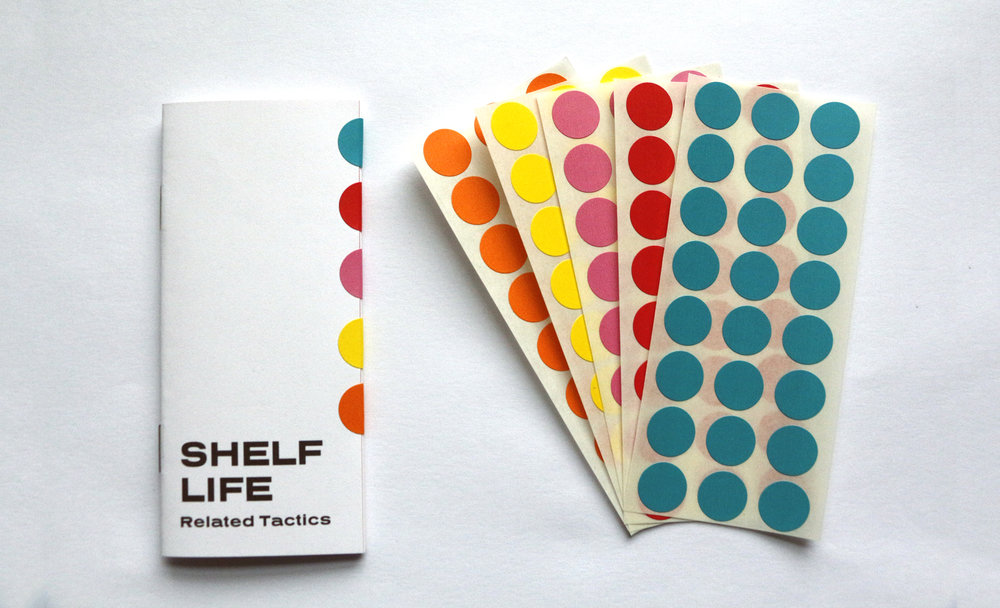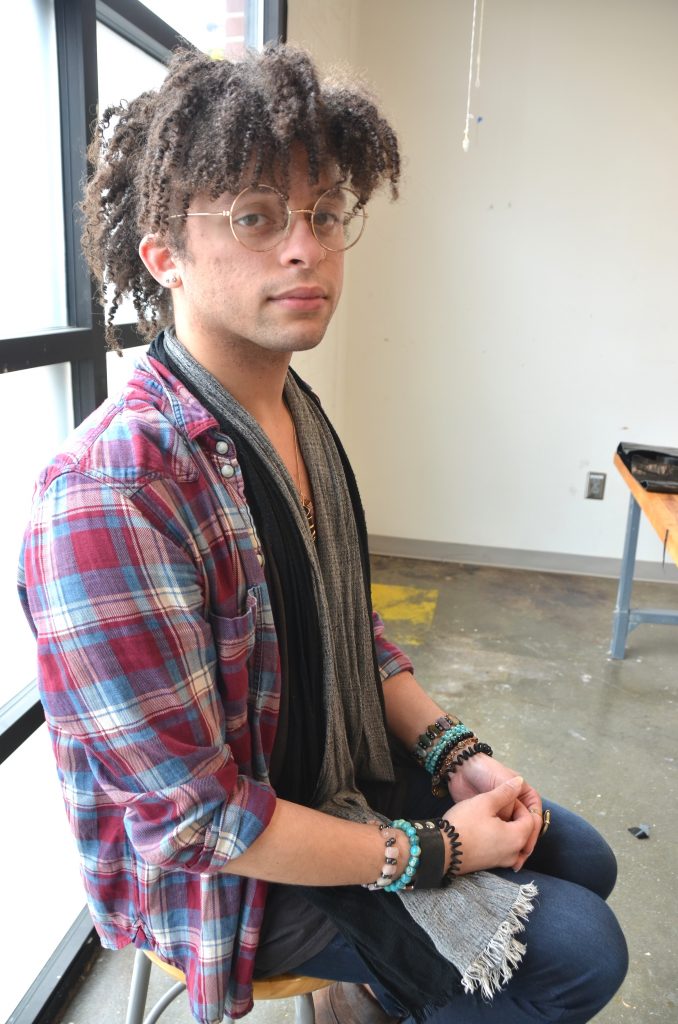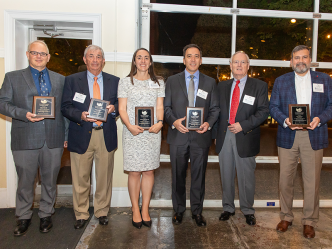In a recent project called Shelf Life created by the California collective art group Related Tactics, students at Augusta University chose books from Reese Library and discovered how they influence their perspectives
Readers select a particular book from a library or a bookstore for a variety of reasons.
Perhaps they are familiar with the author’s previous works or a friend highly recommends the book.
Or it could be something as simple as the reader is drawn to the artwork on the cover.
But with the addition of each book on a shelf, readers are influencing their perspective and collected knowledge.
During a recent joint project called Shelf Life involving classes in both the Department of Art and Design and the Department of Social Sciences at Augusta University, students chose books from the shelves of Reese Library and asked themselves specific questions about the literature in their hands.
“The Shelf Life project was originally created by a collective of three individual artists that I’ve known for years from the San Francisco Bay Area called Related Tactics,” said Raoul Pacheco, an assistant professor of art ceramics for Pamplin College of Arts, Humanities, and Social Sciences. “For about two years, these artists have been doing socially engaging projects challenging or critiquing systems where racial inequalities or other discrepancies exist.”

During this exercise at Augusta University, the students were asked to pose questions such as, is this book written about a particular culture or group of people? If so, does the book presume the reader is not of that particular culture?
Also, is the book authored by a white man? Are people of color, women, indigenous people or homosexuals not central to the book?
In addition, the students were asked to consider questions that many readers might not even think about when selecting a book. Questions such as, is this book written with the presumption that the audience is able-bodied? For example, does a cookbook assume that the reader is able to carry a five-gallon pot of boiling water to the sink?
The students were then told to color-code the spines of each book with bright blue, red, pink, yellow or orange circular stickers that each symbolized the different perspectives found inside the books, Pacheco said.
“It was pretty cool to see all these books with all these stickers all over them and watch the students have these ‘Aha!’ moments like, ‘Wow. I never thought about this knowledge being given from a white perspective if I’m an African-American student,’” Pacheco said. “They had some revelations about how knowledge is dispersed and what kind of knowledge they are actually getting.”

As the students stepped back and looked at the entire bookshelf, they could easily see which influences were the most prominent in the books they were reading in the library.
“I was able to see how exclusive some of the books were that the students chose. I remember the male gaze was very dominate in some cases and many of the books were just from an extremely heterosexual point of view,” said Brooke Farmer, a senior art student. “Also, looking at the shelf, you could see, ‘Wow. There are a lot of books that are these races or these genders.’ It was really interesting to see how these books, especially the art books, might influence my own art and perspective.”
A Fresh Perspective
To lead the Shelf Life project at Reese Library, Pacheco invited the California artists from Related Tactics — Michele Carlson, Nathan Watson and Weston Teruya — to travel to Augusta earlier this year through a grant he received from the university’s art and design department.
“Cheryl Goldsleger, our Morris Eminent Scholar in Art, is super supportive of her colleagues and fellow faculty members and she put together this opportunity that we could apply for funding for visiting artists to the university,” Pacheco said. “I wanted to bring in really smart artists who are doing work in a collective so our students can see how collective energy can create change and how art can create change.”

Pacheco said he was excited to invite these three artists to Augusta University because of their incredible backgrounds.
Carlson is an artist and writer from Oakland who teaches fine arts at California College of the Arts in San Francisco. Watson is an artist and designer from San Francisco who is also the executive director of the Bayview arts non-profit group, Public Glass. And Teruya is an artist and arts policy advocate originally from Hawaii, but who is also a member of the Berkeley Civic Arts Commission.
“These are great artists and the art world is becoming increasingly more social, as well as more political,” Pacheco said. “Specifically, the Bay Area is a hotbed for social change and protests, so I kind of wanted to bring that collective energy here because, if change is going to happen, I think we need to put forward platforms and examples of how that is being done in the art world.”
By inviting these three artists to talk to the students and engage in the Shelf Life project, it opened a dialogue that might not have otherwise happened at Augusta University, Pacheco said.
“I wanted to talk about diversity, inclusivity and racial issues, which are tough subjects, especially here in the South,” he said. “But the demographics of our students here at Augusta University is very diverse. We have lots of African-American students, lots of Asian-American students, lots of Hispanic students and lots of LGBTQ students. However, I’m just not sure how often they get to have open conversations with like-minded people.”
Two Departments Working Together
This was a perfect opportunity to open those lines of communication with these professional artists and his students, but Pacheco said he also wanted to share the experience with another department.
After receiving the grant, he approached Dr. Todd Powell-Williams, an associate professor of Social Sciences at Pamplin College, about involving his sociology students in the Shelf Life project, too.
“Looking at racial issues of inequality, inclusivity and diversity seemed like a natural partnership with sociology,” Pacheco said. “And Dr. Powell-Williams is a very conscience thinker about these issues. Therefore, I wanted to partner with his sociology students to try to bring together this kind of collaboration in a space to think through these issues.”
Pacheco believes it is extremely important for his art students to get out of the classroom and interact with other departments.
“We are just not sitting in our art studios painting pictures,” Pacheco said, chuckling. “That is just such a misunderstanding about what artists do. In fact, I’m a ceramics professor and this had nothing to do with clay. But I’m all about finding ways for our students to broaden their thinking on how materials work and what art really is.”

Once Pacheco described the thought process behind the Shelf Life to Powell-Williams, he jumped at the opportunity.
“After talking to some of the creators of Shelf Life, the idea of the project is to look at the ways in which knowledge is sort of produced or reproduced and the fact that it’s not neutral,” Powell-Williams said.
For example, while sociology instructors and their students are often very diverse people, the texts used in courses across the country typically are not, he said.
“The voice of privileged white men is heavy and it’s particularly pronounced with classical theory,” Powell-Williams said. “It’s just a bunch of dead, white guys.”
But receiving knowledge from “privileged white men” does not only happen when studying sociology, Powell-Williams said.
“For example, if you look at the concentration of ownership in the journalistic media, it’s apparent that there are agenda-setting outlets that largely dictate what the other places talk about,” Powell-Williams said. “That stuff that we see on the front page of the paper isn’t just neutral. It doesn’t just come out that way. It’s the product of editorial-decision making.”
Those decisions impact people’s perception of the world, he said.
“It is a collective sort of effort and, of course, certain voices are left out. Or if they are not left out, they are marginalized,” Powell-Williams said. “For example, maybe a story won’t be on the front page, but it will be buried on the fifth section on the seventh page of the newspaper. That’s the production of the dissemination of knowledge and that’s what I was trying to get my students to think critically about in this project.”
Agents of Change
The students involved in Shelf Life were quickly able to connect the dots and clearly see the definite influences in each book, said Kevin Humphrey, a senior majoring in psychology and minoring in sociology.
“I thought it was interesting, but at the same time, I wasn’t really surprised,” Humphrey said. “We were told to choose books from the sociology section of the library for our exercise and there weren’t many books featuring black or female sociologists, but it was still an interesting exercise.”
Trevis Riddley, a senior majoring in art, said he particularly enjoyed hearing each of the California artists from Related Tactics discuss the different political and social issues they challenge through projects like Shelf Life.
“I liked the fact that all of the artists were people of color and they were doing something that was pretty important for their community,” Riddley said. “They are working together to bring attention to issues that aren’t really being talked about. Or if they are being talked about, they are taking it a step further and interacting with others and collaborating to discuss those issues.”

The Shelf Life project and the visit by Related Tactics will have a lasting positive impact on the campus, Pacheco said.
“This is the first time Related Tactics did this project. It was the first time they had done a project at an institution’s library. And it was the first time they were all brought in as a collective group to an art department with sociology students, too,” Pacheco said. “There were a lot of firsts here. Our arms went out and we just grabbed all of these people and brought them in to this project.”
Since completing the Shelf Life project, Pacheco believes several of the students who participated learned how they can be “agents of change.”
“I feel like the ripple effects of Related Tactics being at Augusta University is going to resonate for a while here,” Pacheco said. “Our students are now starting to think about the atmosphere on our campus and they are starting to think about how what they do matters.
“This gives them a little bit of fuel to let them know that if you want to make changes, make changes. You can do it.”
 Augusta University
Augusta University




